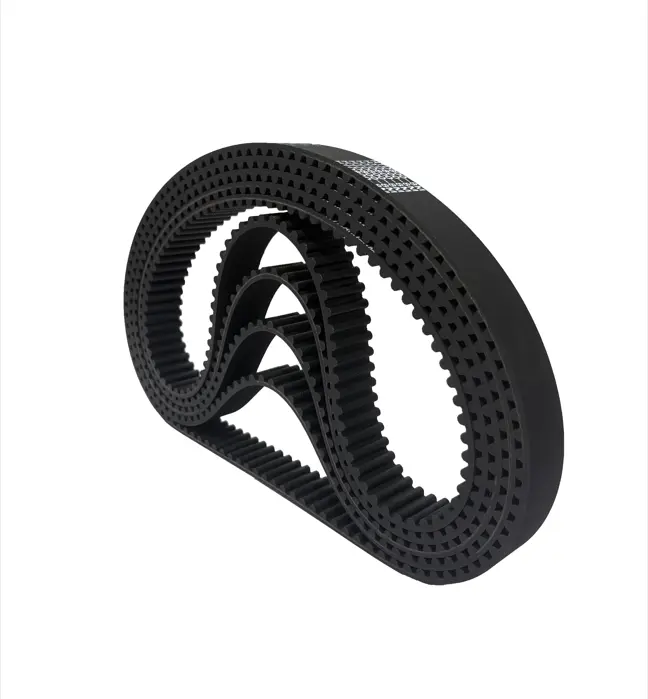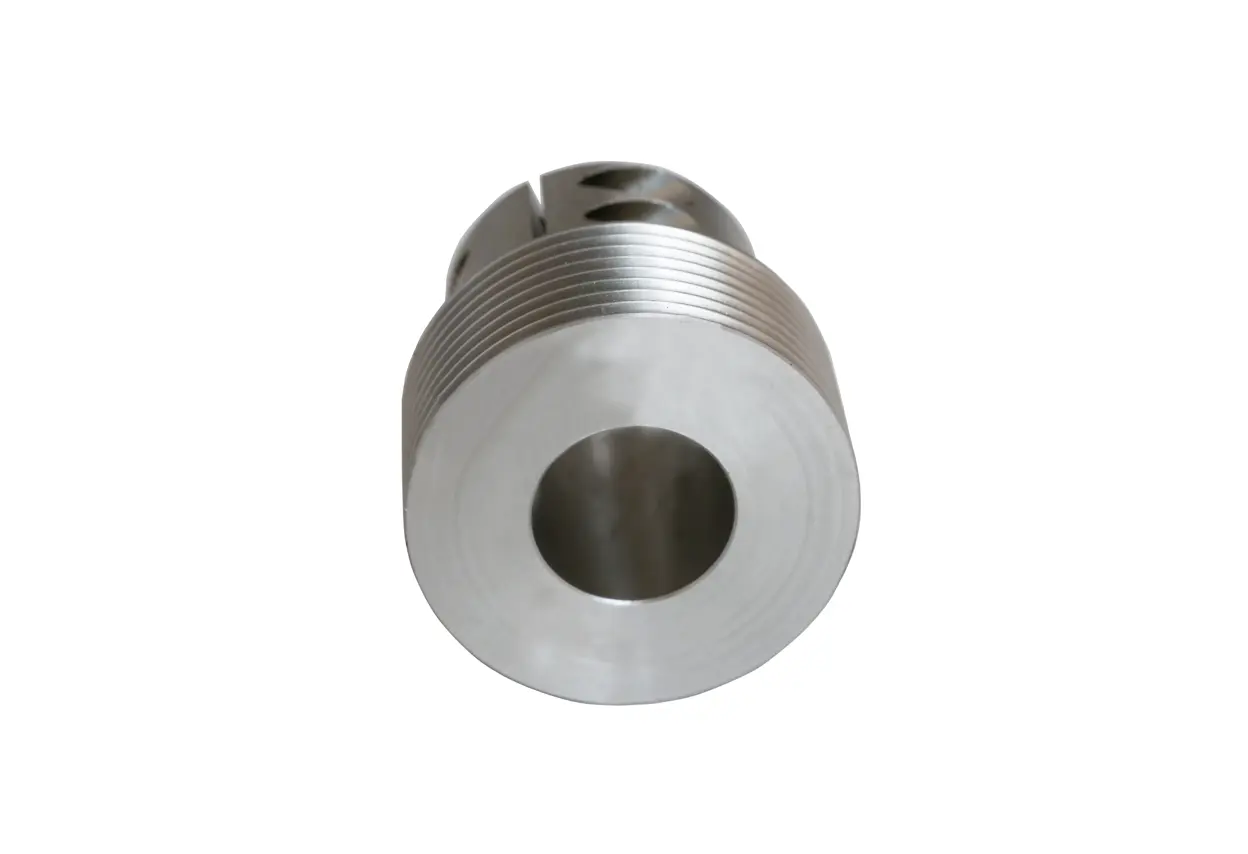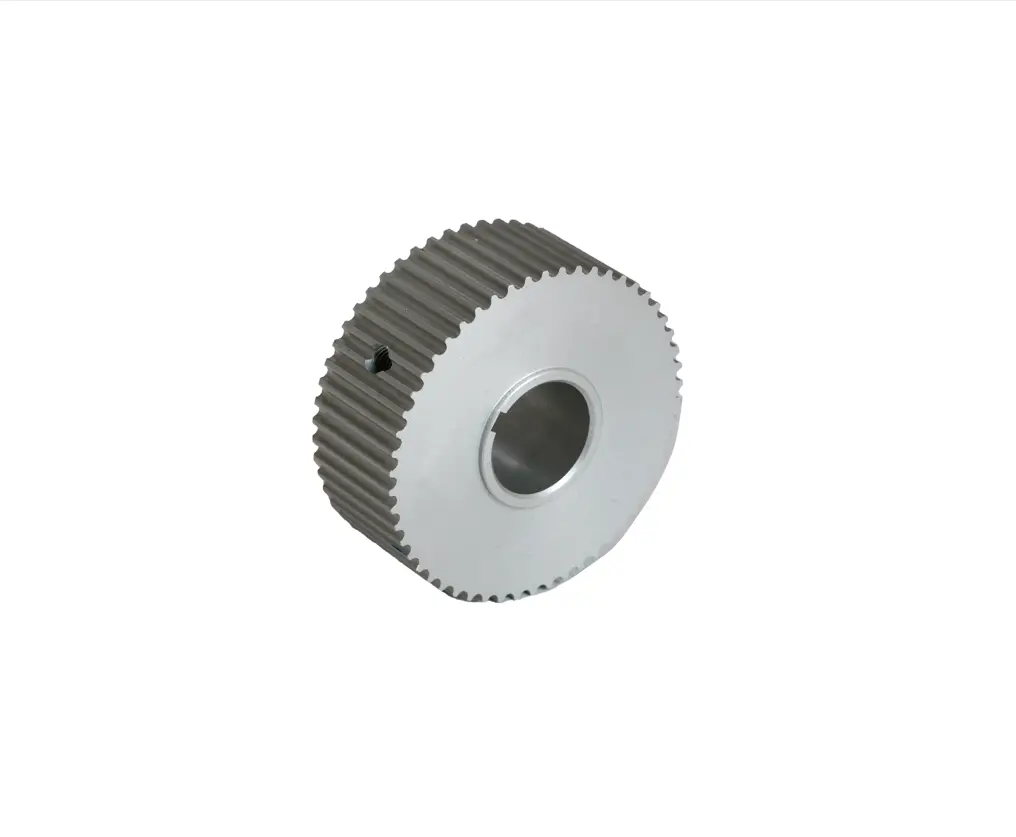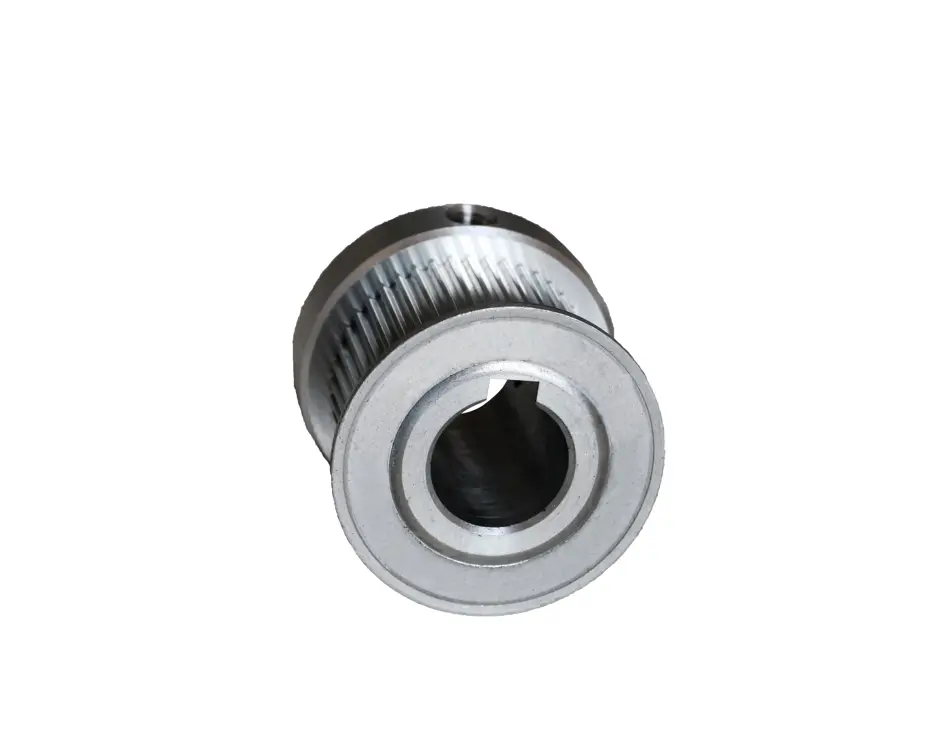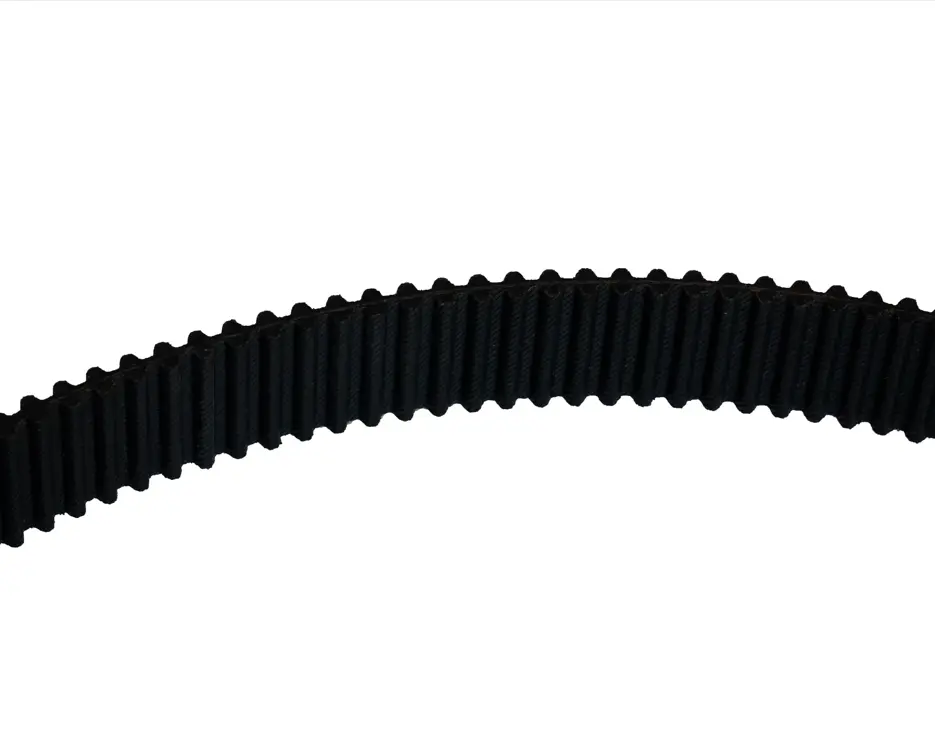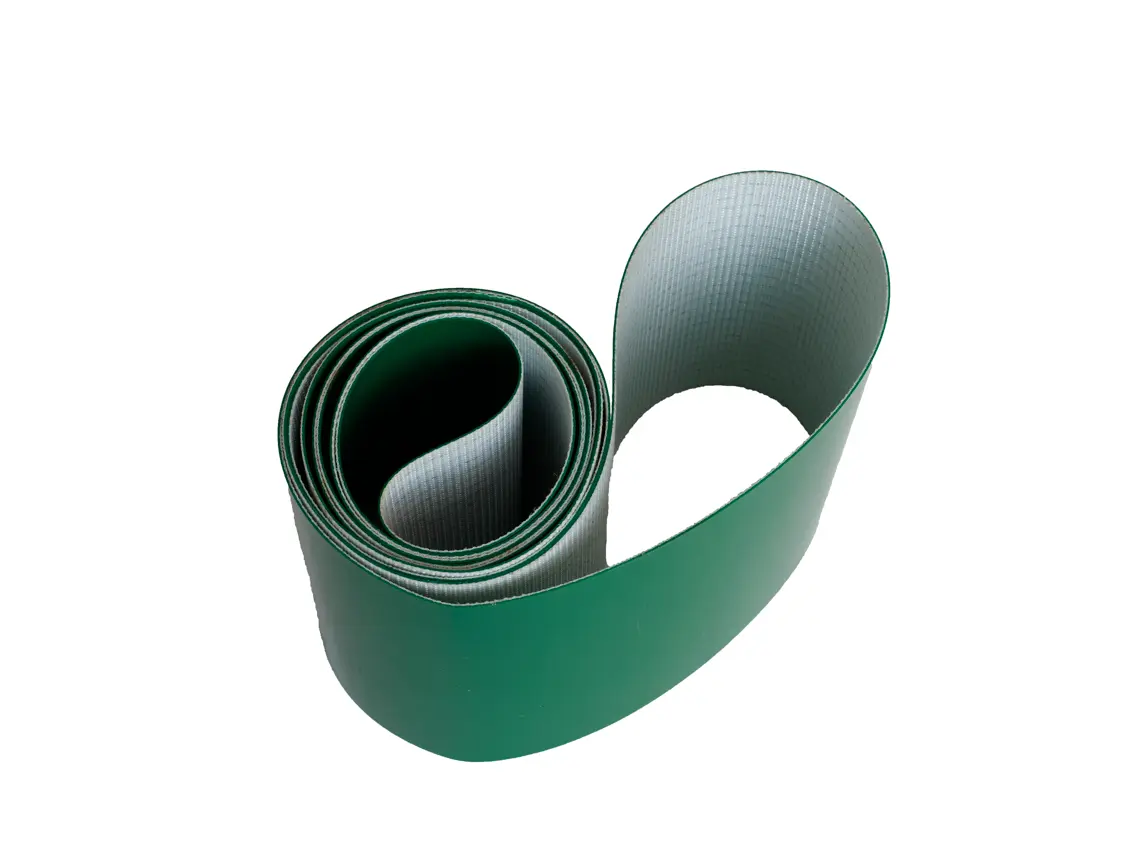How Rubber Timing Belts Outperform in Robotics & Semiconductors?
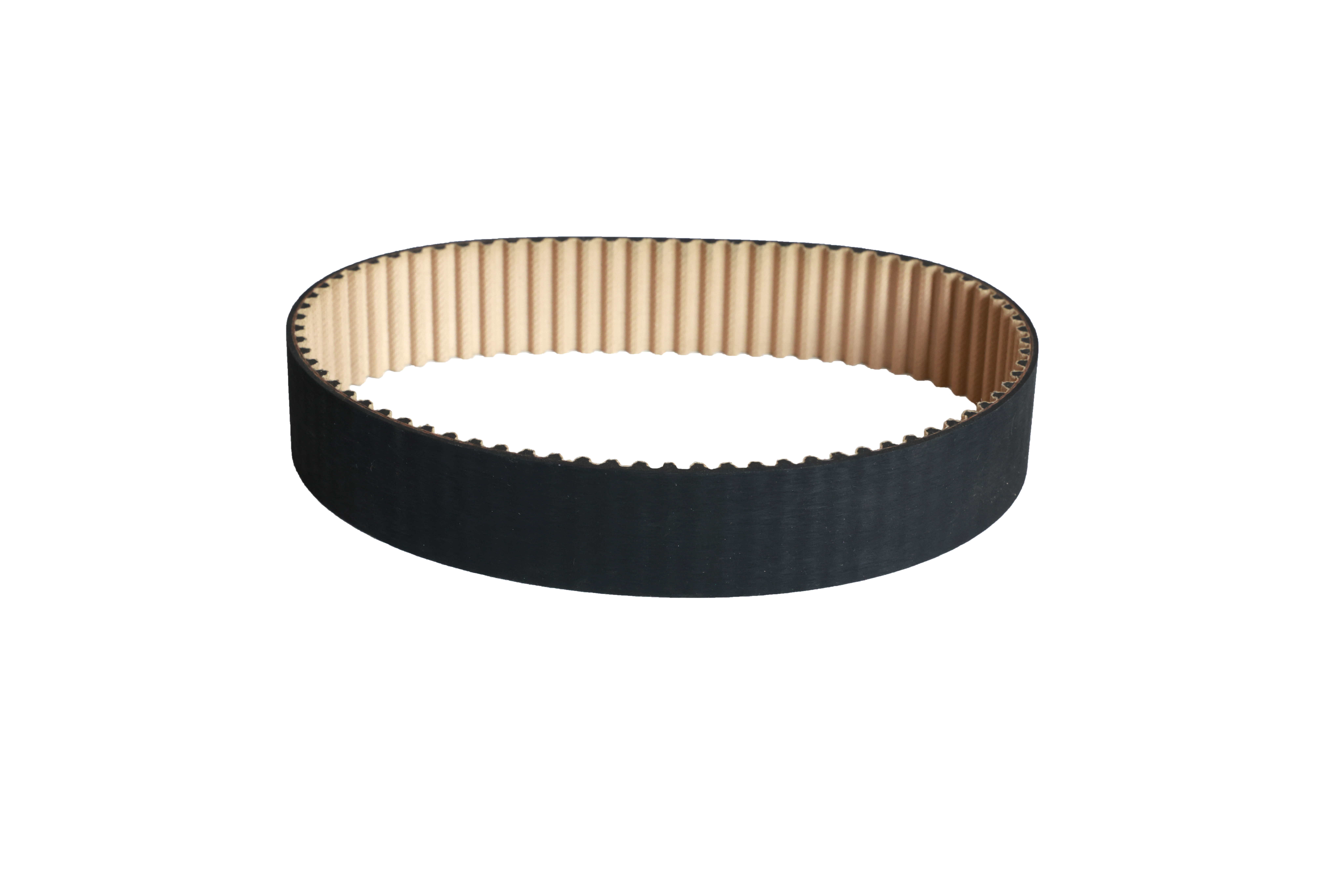
Rubber Timing Belts now deliver higher standards for precision, reliability, and longevity. Key industry demands drive these improvements:
- Automation in manufacturing and automotive sectors requires precise timing belt systems for consistent results.
- Food processing and cleanroom environments need belts with hygienic material properties.
- Aerospace and automotive industries rely on strong, durable belts for accurate power transmission.
- Smart factories use LP belt and belt pulley combinations to support predictive maintenance and reduce downtime.
These features help companies achieve operational efficiency, energy savings, and cleaner production.
Key Takeaways
- Rubber timing belts use high-strength glass fiber cords, and the tooth surface is protected by specially treated nylon 66 high-elastic cloth, making them ideal for precise and tough applications.
- Modern manufacturing techniques ensure belts fit perfectly witH Pulleys, reducing noise, wear, and maintenance needs for smoother machine operation.
- These belts last much longer than older models and chain drives, cutting downtime and saving money with maintenance-free, reliable performance.
- Rubber timing belts help robots move accurately and quietly, supporting fast, stable, and low-maintenance operation in sensitive environments.
- In semiconductor manufacturing, these belts keep cleanrooms free from dust and static, enabling fast, precise, and contamination-free production.
Technological Advancements in Rubber Timing Belts
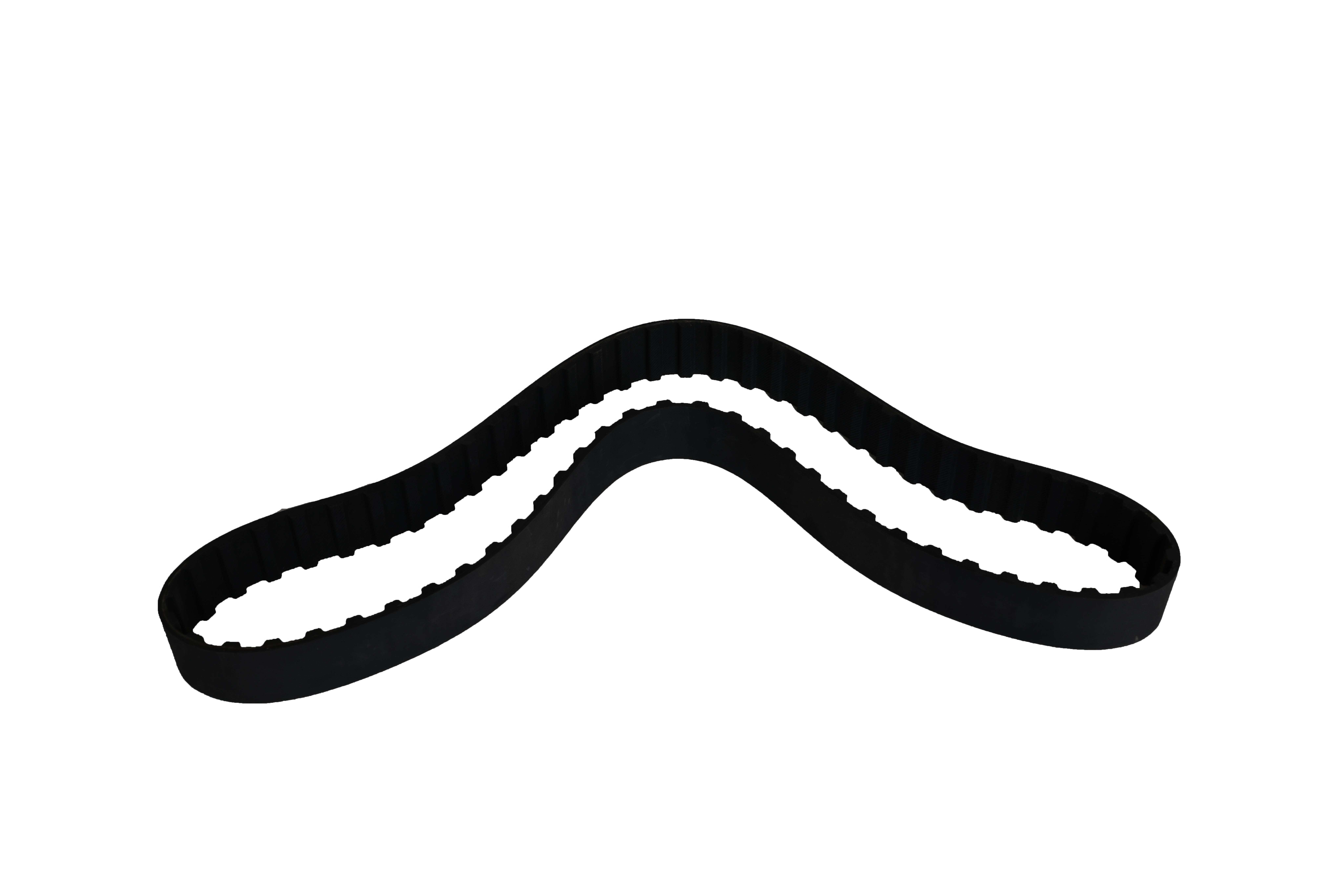
Precision Manufacturing Techniques
Key points:
- Advanced manufacturing methods improve belt accuracy and consistency.
- CNC machines and strict controls ensure perfect fit and reliable operation.
Modern factories use precise mixing and calendering to control the thickness of rubber compounds. They keep thickness changes within 0.1 mm. Workers cut reinforcing cords with length accuracy within 0.5% and place them in parallel for extra strength. Controlled molding shapes the belt and tooth profile without harming the cords.
- Mixing and calendering keep thickness steady.
- Molding forms the belt and teeth with exact pressure and temperature.
- Vulcanization strengthens and makes the belt flexible.
- CNC machines shape teeth with 0.02 mm accuracy for perfect pulley fit.
- Quality checks test size, strength, and stretch, keeping errors under 1%.
Spin casting uses centrifugal force to create smooth surfaces and precise finishes. Computer formulas help factories measure raw materials for consistent hardness and thickness. CNC machining allows for custom features like slots and grooves, improving belt accuracy and performance.
Note: These techniques help belts mesh perfectly with pulleys, reducing noise and wear.
Enhanced Durability and Service Life
Key points:
- New designs and materials extend belt life and reduce maintenance.
- Modern belts last much longer than older models and chain drives.
Rubber timing belts used to wear out quickly in high temperatures or when exposed to oils and water. Common problems included tooth wear, delamination, and fiber core unraveling. New manufacturing methods now use curved teeth and stronger cords that resist stretching. These changes make belts more durable.
Modern belts like the LP belt resist flex fatigue and work in temperatures from -30°C to +80°C. They do not need re-tensioning and last three to four times longer than roller chains, which often need yearly replacement. Service intervals for these belts can reach three years or more, saving time and money.
Maintenance-free belts help factories run longer without stopping for repairs.
Integration with High-Precision Belt Pulleys
Key Points:
- High-precision Belt Pulleys improve timing belt performance.
- Exact tooth matching ensures smooth, accurate movement.
- Durable materials and careful design reduce maintenance and noise.
High-precision belt pulleys play a vital role in modern drive systems. These pulleys have teeth that match the timing belt exactly. This perfect fit keeps the belt and pulley moving together without slipping or jumping. In robotics and semiconductor equipment, even a small slip can cause big problems. Precise tooth matching keeps all parts in sync, which is important for machines that need to move with great accuracy.
Pulleys made from steel, aluminum, or strong plastics resist rust and wear. These materials help the pulleys last longer, even in tough environments. Engineers design these pulleys to work with Synchronous Belts that have evenly spaced teeth. This design lets the system handle large amounts of force while staying quiet and smooth.
Note: When the belt and pulley fit together perfectly, the machine runs quietly and needs less repair.
A table below shows how high-precision pulleys help in different ways:
| Feature | Benefit for Robotics & Semiconductors |
|---|---|
| Exact tooth profile | No slippage or backlash |
| Durable materials | Longer life, less maintenance |
| Smooth transmission | Low noise, steady movement |
| Accurate speed ratios | Precise control and positioning |
High-precision pulleys also help reduce vibration. Less vibration means less wear on the belt and other parts. This leads to longer service life for the whole system. Rubber Timing Belts paired with these pulleys can work for years without needing much attention. This makes them a smart choice for factories and labs that need reliable, clean, and quiet machines.
Rubber Timing Belts in Robotics
Superior Positioning Accuracy
Key points:
- Rubber timing belts help robots move with high precision.
- They keep robotic arms in the right place every time.
- The belts work well with other drive systems for better results.
Robotic systems need to move parts to exact spots again and again. Rubber timing belts help robots do this by keeping the movement smooth and repeatable. Many robotic arms, like the Forte model, use a mix of steel cable drives and timing belts. This setup lets the arm reach the same spot within 0.5 millimeters each time. The belts have strong teeth and cords made from materials like Kevlar or fiberglass. These parts stop the belt from stretching and keep the robot’s movements accurate.
- Timing belts give low backlash, so the robot does not overshoot or lag.
- The belts can handle high torque, which means they move heavy parts without slipping.
- They help reduce vibration, so the robot stays steady.
- The belts work best for short distances and lower power, making them perfect for small and medium robots.
Robots that use timing belts do not need expensive sensors to stay precise. The belts themselves keep everything in sync. This makes the system simple and reliable.
Tip: Using the right tooth shape on the belt can make robots even more accurate and quiet.
Vibration and Noise Reduction
Key points:
- Rubber timing belts make robots quieter.
- They help reduce shaking and keep movements smooth.
- The belts work well in places where low noise is important.
Robots often work in places where noise and shaking can cause problems. Rubber timing belts have a special fabric layer on their teeth. This layer makes them quieter than other types of belts. The belts also help robots stop and start quickly without shaking. This is important for robots that need to move fast and stay steady.
Here is a table that shows how rubber timing belts help reduce noise and vibration:
| Feature | Benefit in Robotics |
|---|---|
| Fabric tooth surface | Lower noise during operation |
| Synchronous belt design | Smooth, quiet movement |
| Quick response to stops/starts | Less vibration |
| High positioning accuracy | Precise, stable movements |
Robots that use these belts can work in labs, factories, and other quiet places. The belts help keep the work area calm and safe.
Maintenance-Free Operation
Key points:
- Rubber timing belts need little to no maintenance.
- They last a long time and do not need oil or grease.
- The belts help robots work longer without stopping.
Modern timing belts, especially those made from polyurethane, resist wear and aging. They do not need frequent checks or adjustments. The belts also resist heat, oil, and harsh conditions. This means robots can keep working without stopping for repairs.
- The belts do not slip, so other robot parts last longer.
- They need fewer tension checks and less cleaning.
- The simple design saves time and money on repairs.
- Long service life means fewer replacements and less downtime.
Rubber timing belts do not need lubrication. This makes them perfect for robots that run all day. The belts keep their grip, even under heavy loads. Robots can work for thousands of hours before needing a new belt.

Note: The chart above shows that timing belts have less slippage and need fewer maintenance cycles than flat belts. Robots can run longer and more reliably with these belts.
Compatibility with Synchronous Belt Pulleys
Key Points:
- Synchronous belt pulleys work best with belts that match their grooves and profiles.
- Lightweight belts help robots move faster and use less energy.
- Quiet operation and low maintenance make these systems ideal for sensitive environments.
Synchronous belt pulleys play a vital role in robotics. They need belts that fit perfectly into their grooves. The toothed design of these belts ensures a strong grip with the pulley. This grip stops slippage and keeps the robot’s movements accurate. Robots often use these systems to move arms or tools to exact spots.
Many engineers choose lighter belts for their machines. Lighter belts reduce inertia, which means robots can start and stop quickly. This feature helps robots work faster and use less energy. Installation becomes easier, and maintenance takes less time. Workers can replace belts without heavy tools or long delays.
The belts do not need oil or grease. This feature keeps the system clean and reduces wear on metal parts. Maintenance teams spend less time checking and fixing these belts. The belts last longer and keep machines running smoothly.
Quiet operation is another benefit. These belts run with low tension, which lowers the load on bearings. Less tension means less noise and less wear. Robots can work in labs or factories without disturbing people nearby.
Some belts have fiberglass reinforcement. This feature allows them to work with bidirectional linear motors. Robots use these motors for precise positioning. The belts help the motors move parts back and forth with high accuracy.
The table below shows how these features help robotics:
| Feature | Benefit for Robotics |
|---|---|
| Toothed belt profile | No slippage, exact timing |
| Lightweight design | Fast movement, easy installation |
| No lubrication needed | Clean operation, less maintenance |
| Quiet, low tension operation | Less noise, longer bearing life |
| Fiberglass reinforcement | Precise bidirectional positioning |
Tip: Choosing belts with the right tooth profile and reinforcement can improve robot speed and accuracy.
Robotics teams often select these belt and pulley systems for high-speed and high-torque tasks. The positive drive and high efficiency help robots perform complex jobs with reliability.
Rubber Timing Belts in Semiconductor Manufacturing

Cleanroom Suitability
Key points:
- Rubber timing belts support cleanroom standards.
- They help keep semiconductor environments free from dust and particles.
- Their materials resist chemicals and moisture.
Semiconductor factories need very clean spaces. Machines must not release dust or small particles. Rubber timing belts use special coatings and smooth surfaces. These features stop particles from breaking off during use. Many belts have anti-static properties. This helps prevent static electricity, which can damage sensitive chips. The belts also resist chemicals and moisture. Workers can clean them easily without causing wear. These qualities make rubber timing belts a good choice for cleanrooms.
Note: Cleanroom belts help protect expensive semiconductor wafers from contamination.
High-Speed, High-Precision Motion Control
Key points:
- Rubber timing belts deliver fast and accurate movement.
- They keep machines running smoothly at high speeds.
- Their design supports precise alignment and low noise.
Semiconductor equipment needs to move parts quickly and with great accuracy. Rubber timing belts help machines reach high speeds without losing control. Their tooth profiles reduce backlash. This means the belt moves the same way every time. The belts also absorb vibration. This keeps the motion steady and protects delicate parts.
The table below shows important performance metrics for these belts:
| Performance Metric | Description |
|---|---|
| Precise Alignment & Synchronization | Ensures accurate timing and coordination between components, critical for precision motion control. |
| High Torque Capability | Designed to withstand and transmit high torque, enabling reliable power transmission in demanding applications. |
| Minimized Slippage | Reduces loss of motion and maintains consistent performance, essential for high-speed operation. |
| Reduced Backlash | Features tooth profiles (arc, circular) that minimize backlash, improving positioning accuracy. |
| Low Noise | New tooth profiles contribute to quieter operation, beneficial in sensitive semiconductor environments. |
| Durable Construction | Materials and design resist wear, grease, oil, and moisture, extending equipment lifespan. |
| Vibration Absorption | Shock absorption properties protect sensitive systems and maintain stable motion control. |
| Extended Equipment Lifespan | Robust design reduces maintenance and downtime, supporting continuous high-performance use. |
These features help semiconductor machines work faster and more accurately. The belts also last longer, which means less downtime for repairs.
Contamination Prevention
Key points:
- Rubber timing belts help stop contamination in sensitive areas.
- Their design keeps particles and oils away from wafers.
- They support strict cleanliness rules in semiconductor plants.
Contamination can ruin semiconductor products. Rubber timing belts use closed surfaces and special materials. These features stop dust, fibers, and oils from reaching the work area. The belts do not need oil or grease. This reduces the risk of leaks. Many belts also have anti-static layers. These layers lower the chance of static discharge, which can attract dust. Workers trust these belts to keep the environment safe for making chips.
Tip: Choosing belts with smooth, sealed surfaces helps keep semiconductor lines clean and efficient.
Optimized Belt and Pulley Systems
Key Points:
- Optimized belt and pulley systems increase accuracy and reliability in semiconductor manufacturing.
- Careful design reduces contamination and improves speed.
Engineers design belt and pulley systems to meet strict standards in semiconductor factories. They select pulleys with smooth surfaces and exact tooth profiles. These pulleys match the belt perfectly. The system moves parts with high precision. Machines use these systems to place wafers and chips in the right spot every time.
Many factories use lightweight pulleys made from aluminum or special plastics. These materials resist corrosion and wear. The pulleys last longer and need less cleaning. Workers can replace pulleys quickly when needed. The belts fit tightly into the pulley grooves. This tight fit stops slippage and keeps the motion steady.
Optimized systems also help prevent contamination. Closed belt surfaces and sealed pulleys keep dust and oil away from sensitive areas. Some systems use anti-static coatings. These coatings protect chips from static discharge. Engineers test each system to make sure it meets cleanroom standards.
Tip: Regular checks of belt tension and pulley alignment help keep machines running smoothly.
The table below shows how optimized belt and pulley systems help semiconductor manufacturing:
| Feature | Benefit for Semiconductor Manufacturing |
|---|---|
| Exact tooth matching | Precise movement, no slippage |
| Smooth surfaces | Less particle generation |
| Lightweight materials | Easy maintenance, longer life |
| Anti-static coatings | Protects sensitive chips |
| Sealed design | Prevents contamination |
Engineers continue to improve these systems. They use new materials and better designs. The result is faster machines and cleaner production lines.
Rubber Timing Belts vs. Competing Drive Systems in 2025
Comparison with Metal Belts
Key points:
- Rubber belts cost less and are easier to maintain.
- Metal belts last longer but cost more and need complex installation.
- New materials improve both options in 2025.
In 2025, engineers see clear differences between rubber and metal belts. Rubber belts use high-strength polymers and sometimes metal reinforcements. These belts cost less to make and replace. Mechanics can install them outside the engine, which saves time and money. Metal belts, often called timing chains, last longer and work well in heavy-duty engines. They sit inside the engine and need oil for smooth operation. This makes them harder and more expensive to replace.
The table below shows a direct comparison:
| Aspect | Rubber Belts | Metal Timing Chains |
|---|---|---|
| Cost | Lower; easy to replace | Higher; complex replacement |
| Performance | Lightweight, quiet, less inertia | Robust, durable, oil-bathed |
| Longevity | Needs replacement every 120,000–180,000 km | Can last engine lifetime |
| Maintenance | Simple, external, less costly | Internal, complex, needs tensioner checks |
| Advances (2025) | Stronger composites, less maintenance | Wear-resistant coatings, self-lubrication |
| Market Trend | Popular for cost and quiet use | Preferred in premium, commercial vehicles |
Note: Rubber belts remain popular in consumer vehicles for their quiet operation and low cost, while metal chains gain ground in high-performance markets.
Comparison with Chain Drives
Key points:
- Rubber belts run quieter and need no oil.
- Chains last longer but cost more and need lubrication.
- Each system fits different needs in automation.
Chain drives use metal links and sprockets. They last a long time and fit into tight spaces. However, they need oil to work well and can make more noise. Rubber belts use reinforced rubber with fiberglass teeth. These belts run quietly and do not need oil. They cost less but wear out faster and need replacement.
The table below highlights the main differences:
| Feature | Rubber Belt | Metal Chain |
|---|---|---|
| Material | Reinforced rubber, fiberglass teeth | Metal links and sprockets |
| Noise & Vibration | Low | Higher, but improved in new designs |
| Lifespan | Needs regular replacement | Longer, less wear |
| Lubrication | Not needed | Needed for smooth operation |
| Size | Larger | More compact |
| Cost | Lower | Higher |
Tip: Rubber belts work best where quiet operation and low cost matter most, while chains suit heavy-duty, long-life needs.
Comparison with Direct Drive Systems
Key points:
- Rubber belts offer high efficiency and good precision.
- Direct drives give the highest precision and need little maintenance.
- Each system serves different types of machines.
Direct drive systems connect motors straight to the load. This setup gives the best precision and almost no maintenance. However, it costs more and fits only special machines. Rubber belts, especially synchronous types, reach up to 98% efficiency. They keep shafts in sync and reduce stress on parts. These belts need less tension and last longer than older belt types.
A quick comparison:
| Aspect | Rubber Belts (Synchronous) | Direct Drive Systems |
|---|---|---|
| Efficiency | Up to 98% | Highest, no intermediate parts |
| Precision | High, minimal slippage | Maximum, direct connection |
| Maintenance | Low, stable tension | Minimal, almost none |
| Application | Good for many machines needing precision | Best for high-tech, top-precision tasks |
- Synchronous belts let engineers pick tooth shapes for better torque and accuracy.
- Direct drives suit robots and tools that need perfect movement and almost zero upkeep.
Note: Choosing between these systems depends on the machine’s needs for cost, precision, and maintenance.
Real-World Applications and Case Studies
Robotics Industry Success Stories
Key points:
- Robotics companies use timing belts for accuracy and reliability.
- Timing belts help robots work longer with less noise and maintenance.
Many robotics companies have improved their machines by using advanced timing belts. In one factory, engineers replaced old chain drives with new timing belts. The robots started to move faster and more quietly. The belts did not need oil, so the work area stayed clean. Maintenance teams reported fewer breakdowns. The robots could lift heavier parts without slipping. This change helped the company finish orders on time and save money on repairs.
A leading robotics firm shared that their assembly robots now reach a positioning accuracy of 0.2 millimeters. The timing belts reduced vibration, so the robots could handle delicate parts without damage. Workers noticed that the belts lasted longer than before, even when the robots ran all day.
Tip: Using timing belts with the right tooth shape can make robots even more precise and quiet.
Semiconductor Industry Implementations
Key points:
- Semiconductor plants need clean and precise machines.
- Timing belts help keep production lines free from dust and static.
Semiconductor factories have strict rules for cleanliness. Engineers chose timing belts with smooth surfaces and anti-static coatings. These belts did not shed particles, so the chips stayed safe from contamination. In one plant, the belts helped machines move wafers quickly and with exact timing. The belts did not need oil, so there was no risk of leaks. Production managers saw fewer defects and less downtime.
A case study from a chip manufacturer showed that their machines ran for over two years without belt replacement. The belts kept their tension and did not stretch. This helped the company keep up with high demand and reduce maintenance costs.
Complete Solutions with Belt Pulleys
Key points:
- Complete systems use timing belts and precision pulleys together.
- These systems improve power transmission and reduce maintenance.
Many industries now use complete solutions that combine timing belts with high-precision pulleys. These systems offer several benefits:
- Reliable and precise power transmission keeps machines in sync.
- Minimized slippage improves grip and torque.
- High torque capacity supports demanding tasks.
- Reduced noise and vibration make workspaces quieter.
- Low maintenance needs save time and money.
- Durable materials extend equipment life.
- Vibration and shock absorption protect sensitive parts.
- Consistent operation supports automation.
- Optimized systems enhance reliability and lower costs.
A packaging company reported that after switching to these complete solutions, their machines ran smoother and needed fewer repairs. The belts and pulleys worked together to keep speed ratios exact, even during long shifts. This helped the company deliver products faster and with fewer errors.
Key points:
- Rubber Timing Belts now set the standard for precision, reliability, and cleanroom use.
- Innovations in materials and manufacturing drive industry growth and new engineering possibilities.
Industry experts note several reasons for the rise of Rubber Timing Belts:
- They synchronize mechanical parts in automotive and food processing.
- Market value and demand continue to grow worldwide.
- High-quality belts from trusted manufacturers reduce failure rates and improve safety.
| Innovation Aspect | Impact on Precision Engineering |
|---|---|
| Material Advances | Better resistance to heat, oil, and wear for longer belt life. |
| Smart Manufacturing | AI-driven monitoring boosts uptime and accuracy. |
| Sustainability Focus | Eco-friendly materials meet global standards without losing strength. |
Engineers now trust these belts for critical tasks. The combination of advanced design and proven reliability shapes the future of precision engineering.
FAQ
Key Points:
This FAQ answers common questions about rubber timing belts in 2025. It covers materials, maintenance, applications, and benefits for robotics and semiconductor industries.
How often should a rubber timing belt be replaced?
Most new belts last three years or more. Service intervals depend on the application and environment. Regular checks help ensure safe and reliable operation.
Why do engineers choose rubber timing belts for cleanrooms?
Rubber timing belts have smooth, sealed surfaces. They do not shed particles or need oil. This design helps keep cleanrooms free from dust and contamination.
Can rubber timing belts handle high-speed applications?
Yes. Modern belts support high-speed, precise motion. Their tooth profiles reduce slippage and backlash. This makes them ideal for robotics and semiconductor equipment.
Tip: Always match the belt with the correct pulley for best performance and longer service life.

